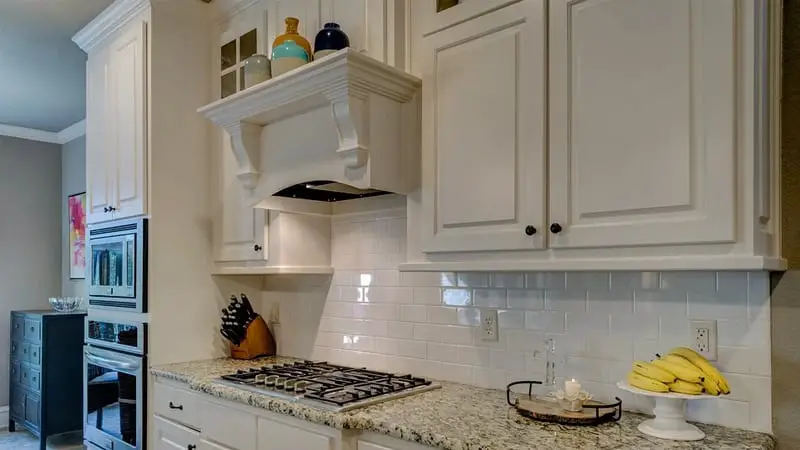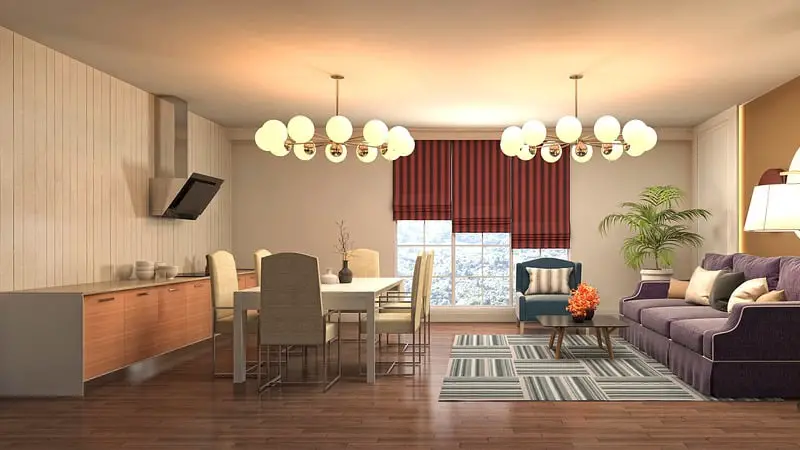If you frequently mistake countertops for cabinets, you’re not alone. So many other people do this that writing this article becomes necessary. If you’re as confused about this topic as most other people, you may want to know if countertops are the same as cabinets.
Countertops aren’t the same as cabinets, but they can be designed cohesively to make your kitchen look elegant. Countertops are flat surfaces placed on top of your bottom cabinets and are normally used as a resting surface for small kitchen appliances. Cabinets, on the other hand, are enclosed and serve as storage.
Since your cabinet and countertop are the two structures that most people see when they first get to your kitchen, styling them to match excellently is a no-brainer.
In this article, you’ll learn some of the major differences between kitchen countertops and cabinets. You’ll also learn what you can use either of these structures for, and how to style them to create a cohesive design language for your kitchen.
What are Cabinets in Kitchen?

A kitchen cabinet refers to a piece of furniture for storing food, cooking utensils, and silverware relating to the kitchen. It is present in most kitchens, and it usually holds some extra appliances like ovens and dishwashers.
Cabinets have seen wild redesigns over the years, as they’ve existed for a pretty long time. The earliest usage of cabinets in a kitchen dates back to the pre-World War I era when people used tables and cupboards to store their utensils and food.
It wasn’t until after the second world war that the style of cabinets that exist today started to show up. Today, cabinet designs are mostly driven by advancements in technology and advancements in ergonomic research.
While cabinets today all have similar designs, there are still many kinds of cabinets to choose from when setting up your new home. Some of the cabinet options are structurally different, but you won’t know the difference between most kitchen cabinets without checking under the hood.
Here are some of the different types of cabinets you’ll find in most kitchens today, and the specific cases when they’re the best option.
1. Base Kitchen Cabinets
Since this is one of the most popular cabinet designs today, it’s what usually comes to mind whenever you hear the word: “cabinet.” Predictably, base kitchen cabinets are so named because they stay on the bare floor.
Most base cabinets have sinks installed in them, and they support the countertop from the base. These cabinets usually provide enough space to install additional kitchen equipment like dishwashers or ovens, without skimping on space for you to store your dishes and cutlery.
Base kitchen cabinets are best for large kitchens, and even in large setups, it’s usually the largest part of the kitchen. However, that’s not a bad thing, as it carries most of the stuff you’ll be using in your kitchen.
2. Wall Kitchen Cabinets
Wall cabinets aren’t an alternative to base cabinets; they complement them instead. From the name, you can already tell they hang on the wall using screws. What you might not be able to tell, however, is the fact that they’re usually around 18 inches away from the base cabinet.
Wall cabinets exist to help store lighter utensils and other kitchen items that you may want to reach more quickly. It’s recommended to make your wall cabinets look more elegant, as they contribute more to your kitchen’s overall design, despite being much smaller.
3. Utility Kitchen Cabinets
Utility cabinets are usually free-standing, unlike wall cabinets that are usually hooked to the wall or base cabinets that live the entirety of their lives on the floor. They’re not very common in homes, but they’re almost a necessity in industrial kitchens.
Also known as tall cabinets, utility cabinets can hold everything from your dishes to foodstuffs. While they’re not the best option for housing ovens and microwaves, there’s no rule preventing you from using them as a host for your equipment.
What are Countertops in Kitchen?

A countertop refers to the flat horizontal surface atop a counter, usually found in workrooms and kitchens. Countertops in the context refer to the ones found in kitchens.
Kitchen countertops may be installed as free-standing structures, but it’s not uncommon to see one supported by a cabinet or table. Unlike the countertops that you’re likely to come across in workrooms, kitchen countertops are designed to house cookers, sinks, stoves, and dispensers.
Unlike cabinets, there aren’t many different kinds of countertops. This is partly because they almost all perform the same function: housing your cookers and stoves.
While there mightn’t be a great variety in functionality, countertops differ by the material used in making the counter. Here are some of the different types of countertops differentiated by the material they’re made with.
1. Granite
Granite was historically used in the highest-end kitchens, but it has since found its way into the most kitchen today. Granite makes for a compelling material for a tabletop due to the versatility of the stone’s color.
You can find a granite counter in blue, red, and white hues, which makes them perfect for almost all kinds of home design themes. While granite is naturally prone to annoying stains, most granites used for kitchen countertops are treated to make them more resilient to stains.
What can count as a disadvantage against using granite for your tabletop is the price, which is on the rather expensive side. Since it was originally made for a luxurious kitchen, the steep price is somewhat justified.
2. Marble
Marble is popular for the same reasons as granite, but marble isn’t available in as many hues as granite. With its porous surface, it’s even worse with stains than granite, requiring more expensive stain resistance treatment to make it usable.
While it may have a load of disadvantages, the look of granite in a modern kitchen is unmatchable, and it’s the countertop materialist that most modern luxurious kitchens use.
How to Pair Countertops and Cabinets
Countertops and cabinets may refer to different kitchen facilities, but you can certainly make them work together for a cohesive kitchen design.
When pairing countertops and cabinets, the first factor to pay attention to is the colors. You can choose to have colors that match or contrast. The color wheel can help you play with colors before deciding on how to design your kitchen.
Once you get the colors right, your kitchen will look like a match made in heaven, as those are the two most important structures in any modern kitchen.

